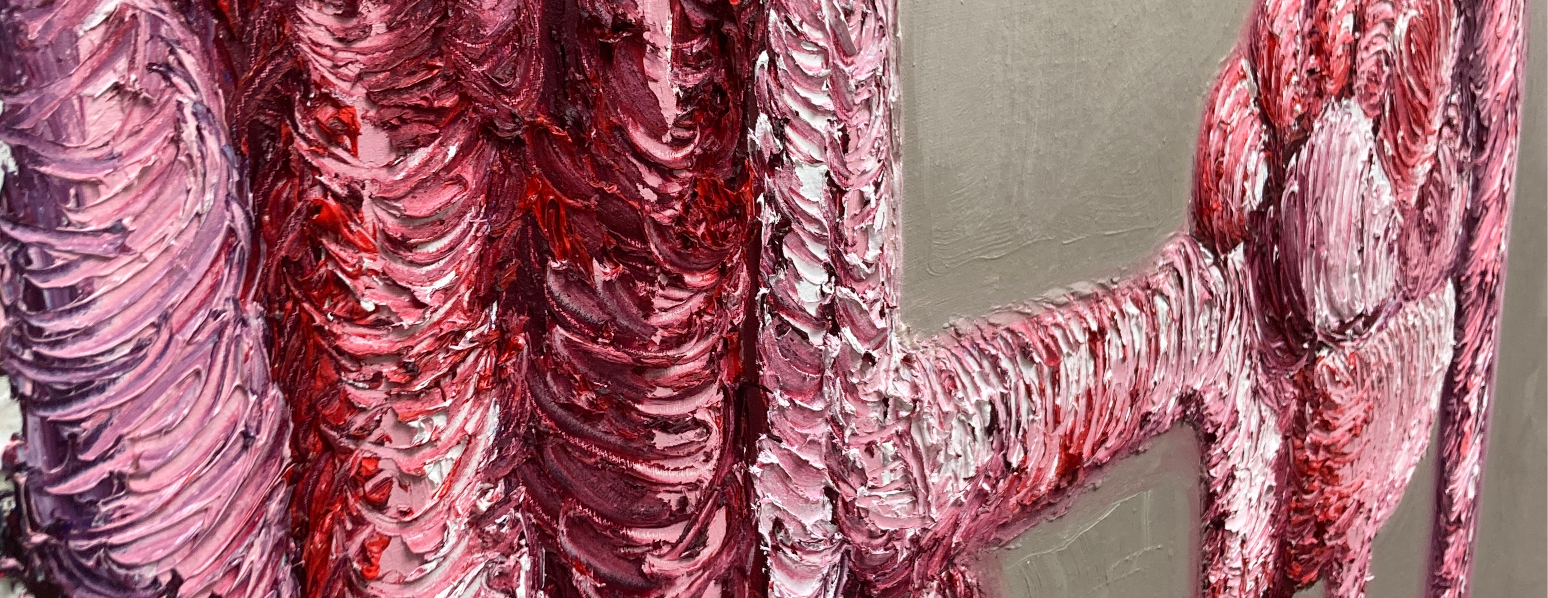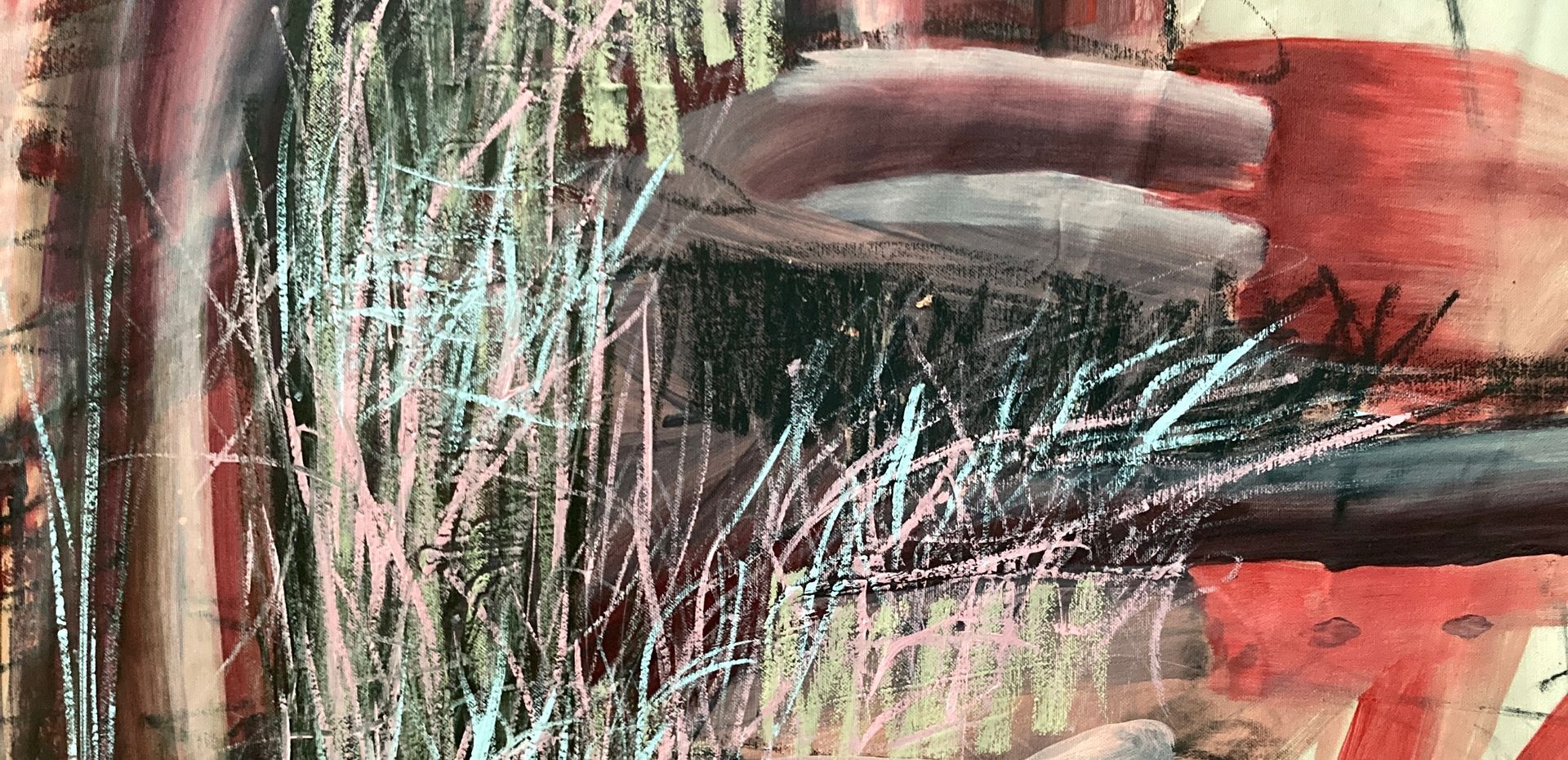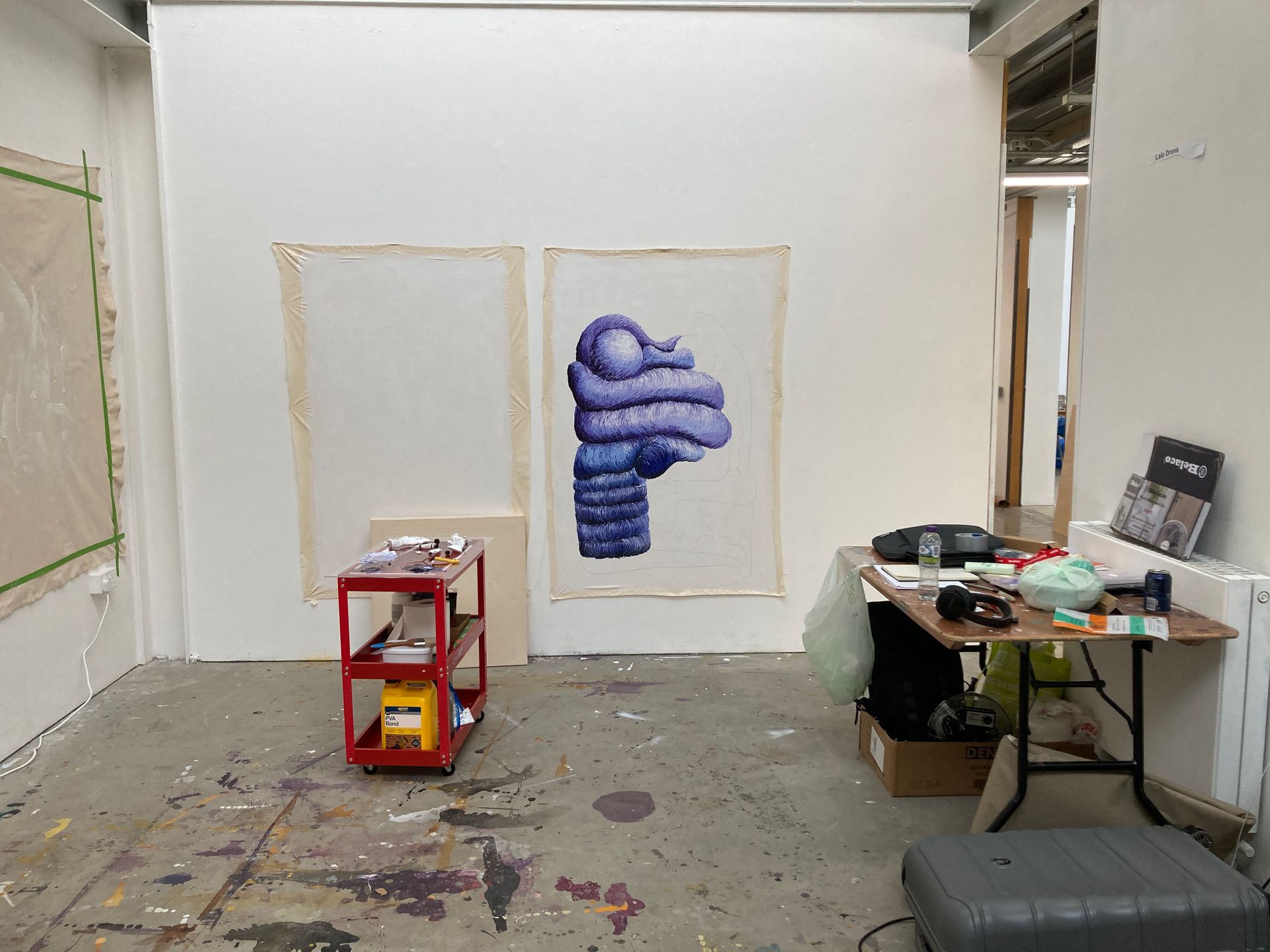Queen Bee Theatre: Partial Objects, and the Politics of Desire
A final painting that challenges psychoanalytic narratives and pushes the boundaries of what painting can do and mean.
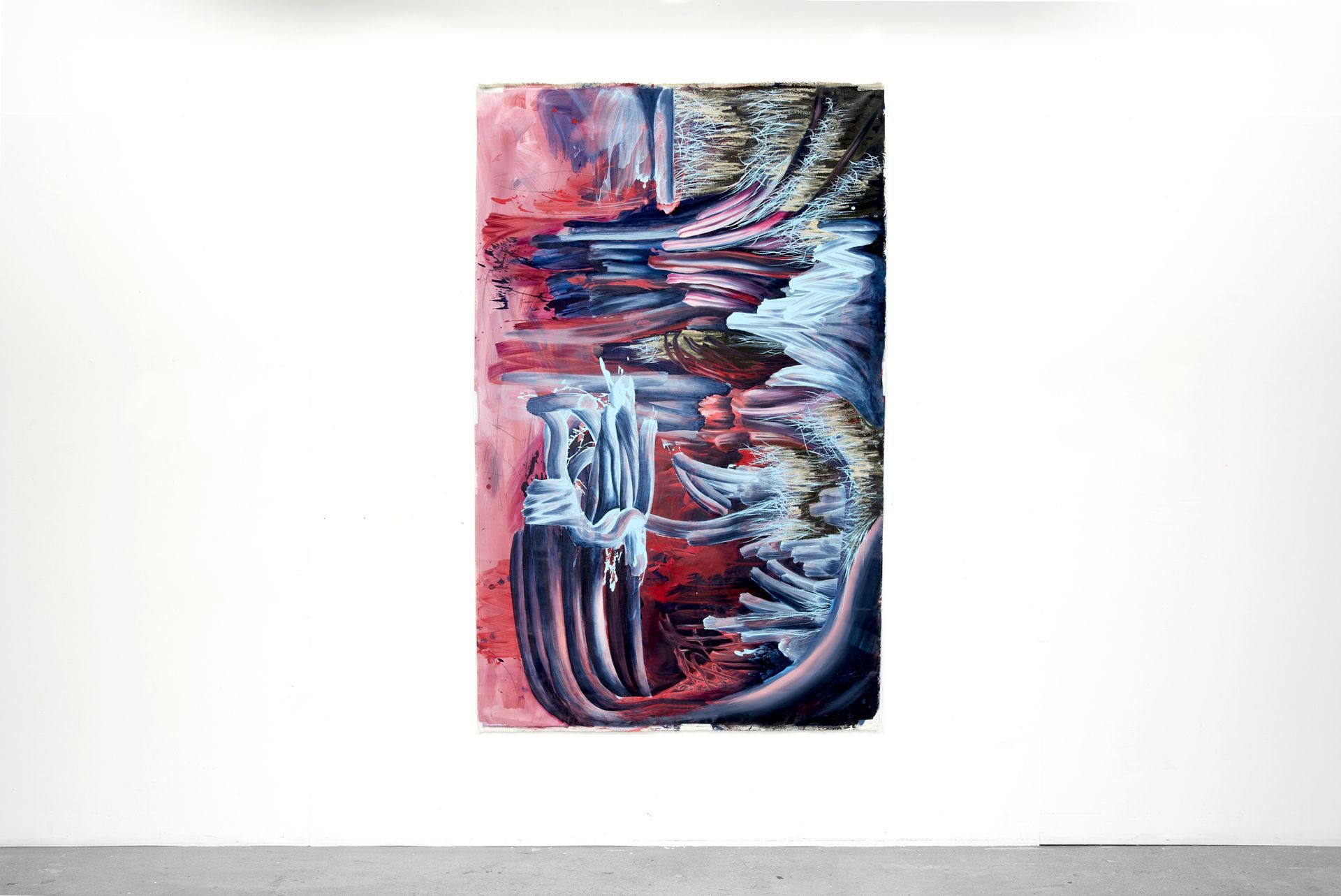
What Is Queen Bee Theatre?
Queen Bee Theatre (Oil and acrylic on canvas, 120x270cm) is the final painting I created during my Master’s in Painting at the Royal College of Art. More than a conclusion, it marks a radical departure, both from the institution and from traditional frameworks of painting. It exists at the crossroads of theory, affect, and rebellion, squarely positioned within the field of expanded painting.
Rather than expand medium physically, the work expands conceptual limits, challenging the expectation that painting must represent, resolve, or conclude. It is a final work that refuses finality.
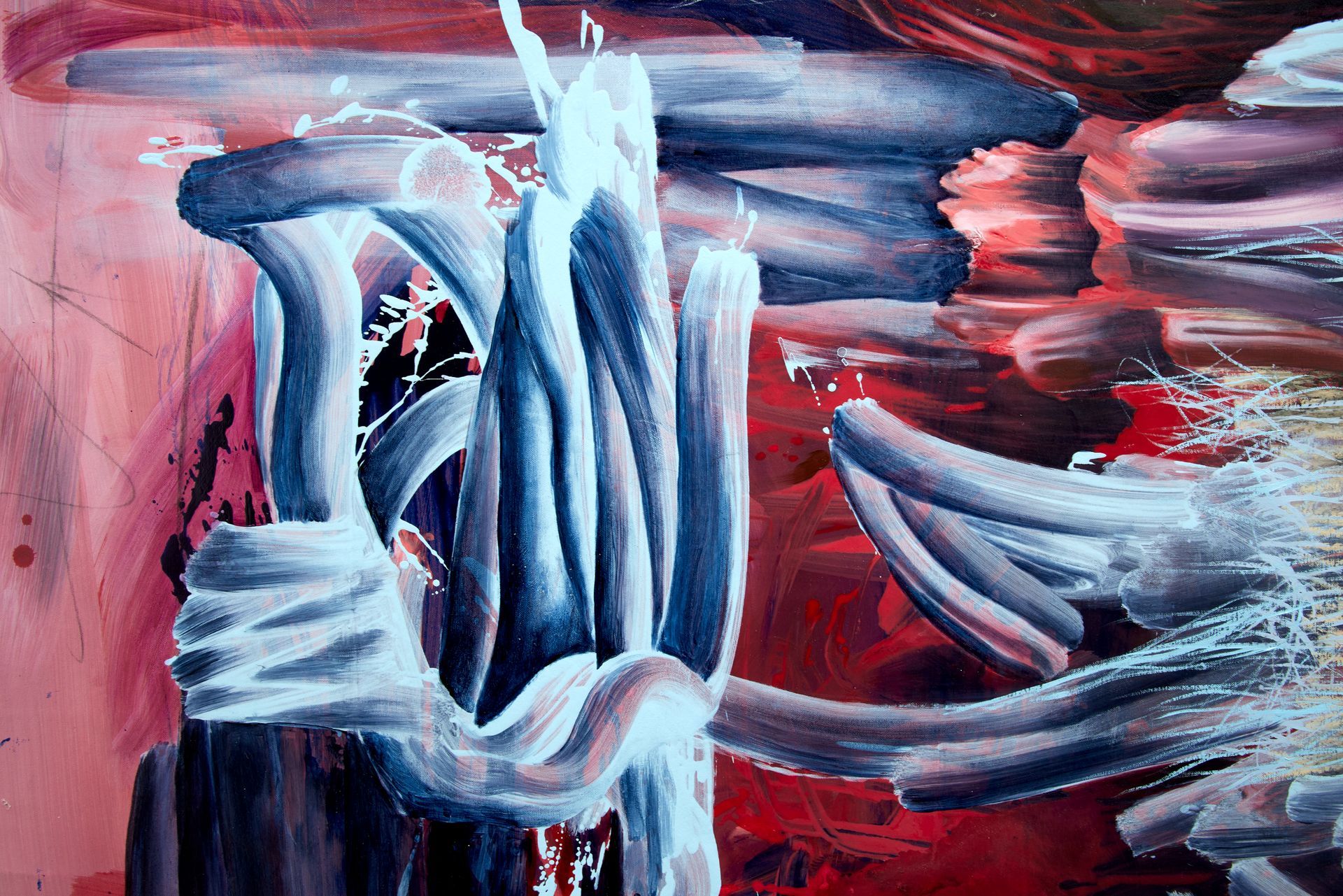
Painting as Desiring-Machine – A Deleuze and Guattari Perspective
Drawing on Deleuze and Guattari’s theory from Anti-Oedipus, Queen Bee Theatre abandons the canvas as a space of symbolic representation. Instead, it becomes a desiring-machine, a site of ongoing production where libidinal flows, ruptures, and intensities dominate over formal structure or psychological coherence.
What this means in practice is that the painting doesn’t aim to represent a hidden meaning or personal story. There’s no central figure to decode, no message to extract. Instead, the painting operates by activating sensation...through clashing forms, unstable space, and unresolved energies. The work is not about what it represents, but about what it does: how it moves, disrupts, and affects the viewer.
This is not art as the expression of repressed content. It is art as production—where meaning emerges through movement, through tension, through becoming. The painting is alive with contradiction, not as a puzzle to solve but as an experience to undergo.
Partial Objects and Fragmented Desire
Central to this painting’s conceptual gravity is the partial object, a psychoanalytic term refigured by Deleuze and Guattari not as a developmental stage to move beyond, but as something with its own political and affective force. In Queen Bee Theatre, the partial object can be understood as a kind of body without organs—fragments of a body, interior or exterior, that resist being assembled into a coherent whole.
The painting refuses stable definition or fixed meaning, constantly slipping away from what is known or nameable.
The visual language of Queen Bee Theatre, fractured, toxic, chaotic—echoes this refusal. It pushes back against totalizing form, instead privileging rupture, ambiguity, and raw affect. These are not symbols waiting to be interpreted; they are affective nodes. Each shape pulses with its own autonomous force, detached from any fixed system of meaning.
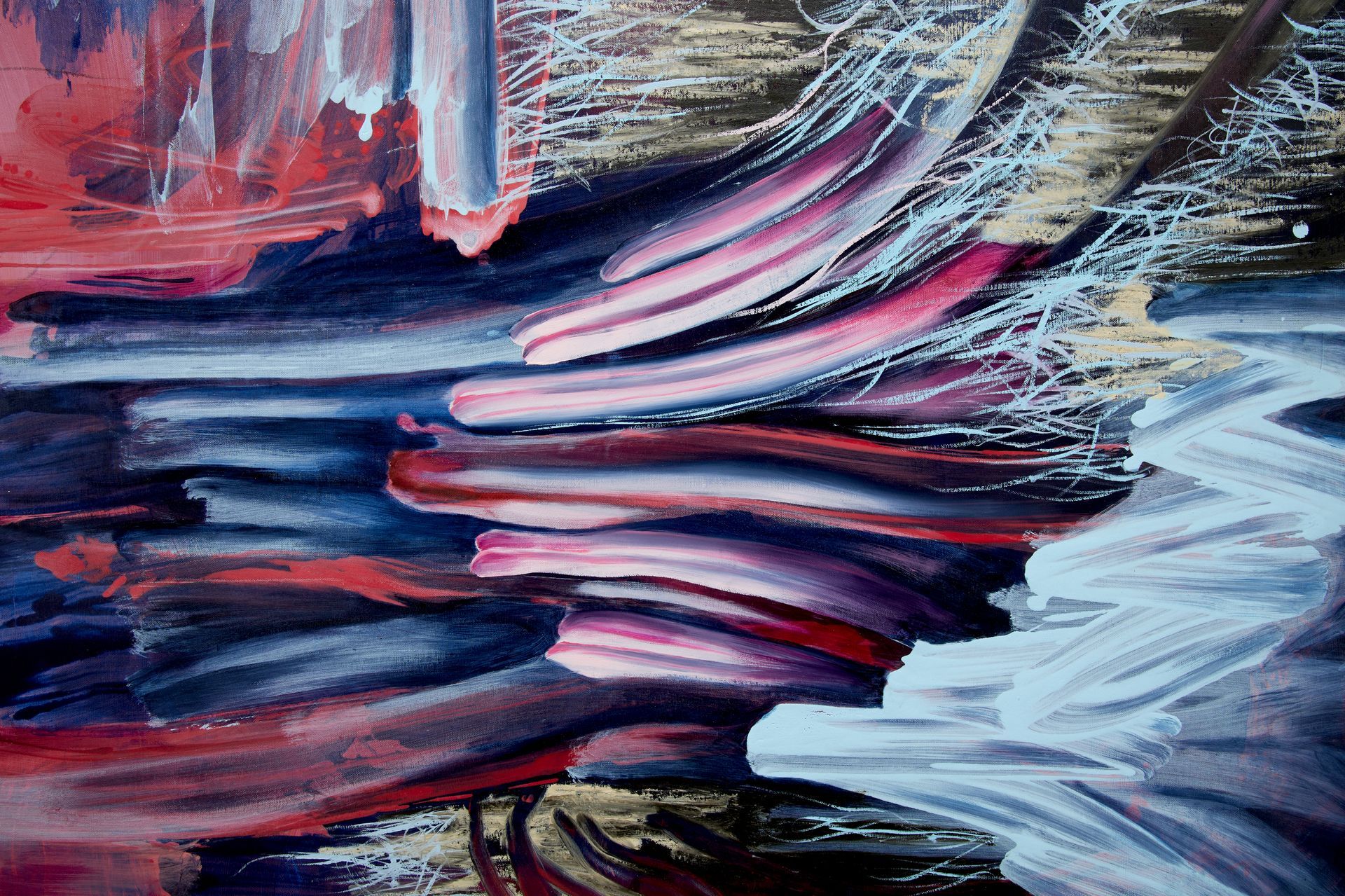
Deterritorialization and Smooth Space
Rather than offering a fixed space or centered subject, the painting generates what Deleuze and Guattari call smooth space, a non-hierarchical terrain of transformation and flow. There is no ground, no figure, no final structure. There is only affective terrain, constantly shifting. We see this in the painting composition, where there is a destabilising orientation, almost an anti-gravity feeling.
In this way, Queen Bee Theatre deterritorializes the painting tradition itself. It refuses to belong, to be framed, to be explained.
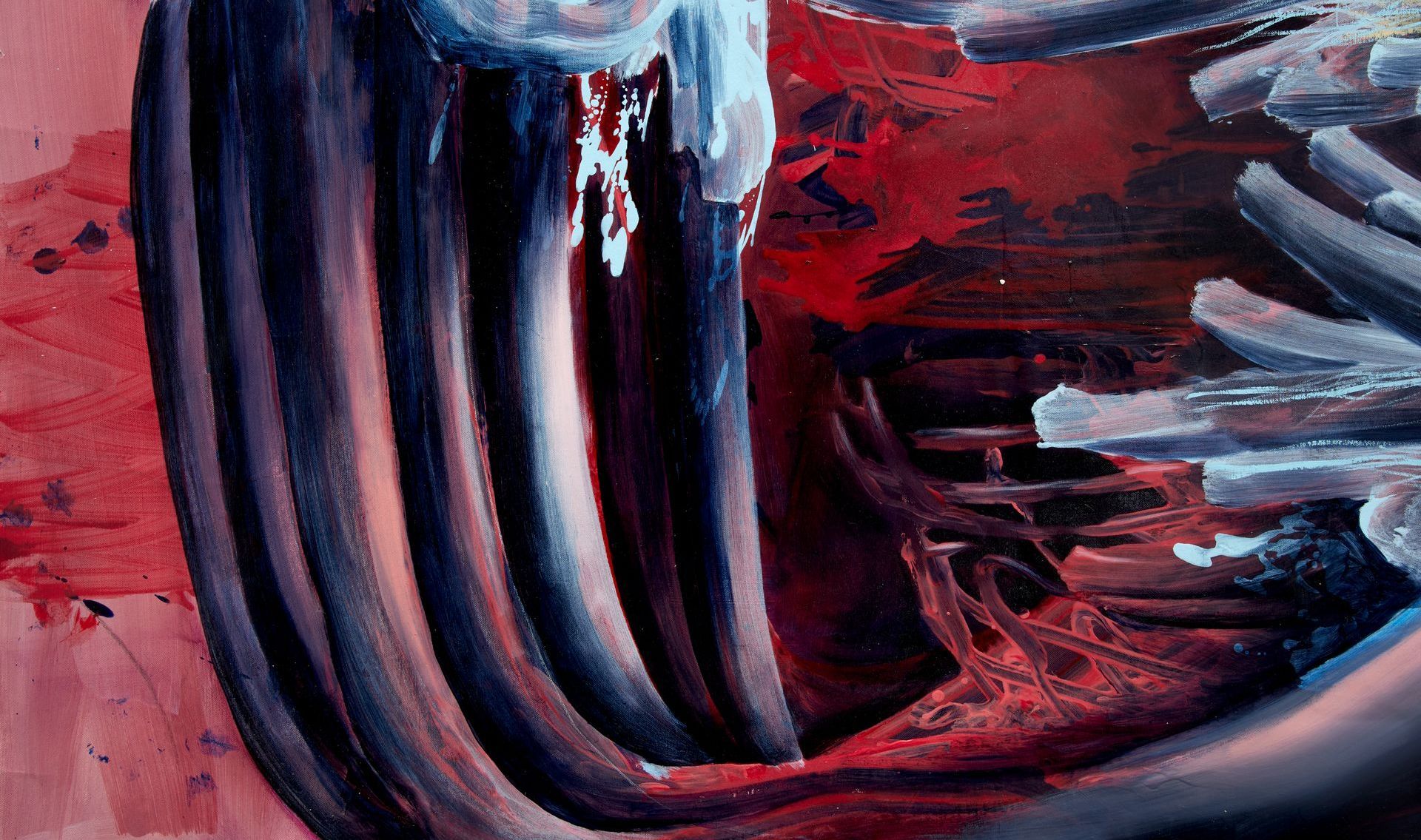
Expanded Painting and the Refusal of Closure
What makes Queen Bee Theatre an example of expanded painting is not its material ambition, but its ontological one. It expands what painting is and does by:
- Collapsing the distinction between painting and event
- Rejecting the need for visual or conceptual resolution
- Disrupting viewer orientation and spatial logic
- Refusing containment within institutional, psychological, or aesthetic categories
As the final work made at the RCA, it acts less as a conclusion and more as an exit wound—a refusal to graduate neatly. It is a performative unmaking, echoing Deleuze and Guattari’s view that art is not about identity or expression, but about becoming.
Conclusion – Painting as a Political Event
Queen Bee Theatre is not just a painting. It is a machinic, conceptual and political event. It embodies the force of desire untethered from symbolic grids. It resists the tidy conclusions of psychoanalysis, traditional academic programs, and formalism alike.
In doing so, it does not just expand painting; it reconfigures its territory entirely.
Reference: partial objects by Kenneth Surin here
If you'd like to see more of Lala Drona's paintings click here.
Xpainting with Lala Drona
